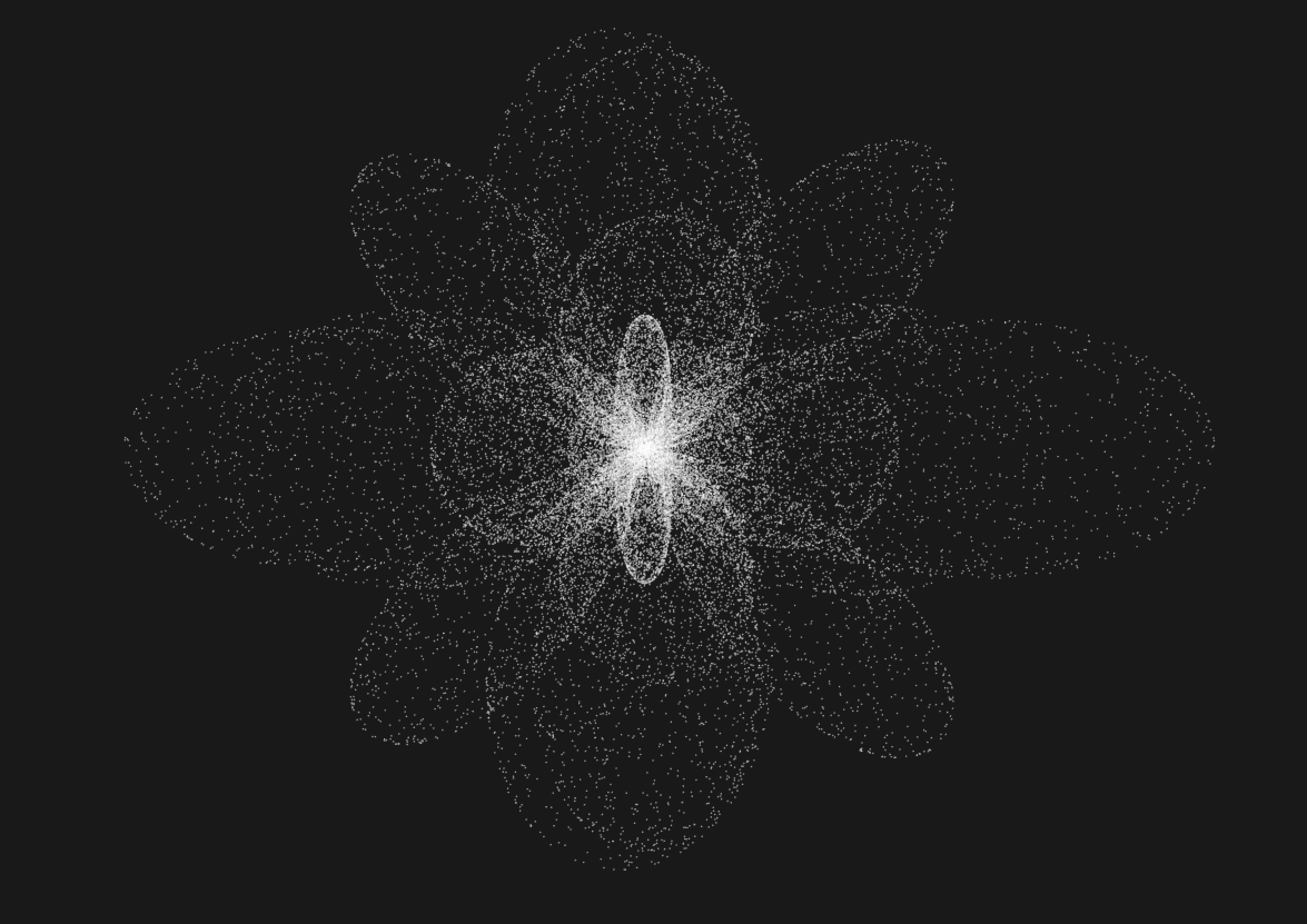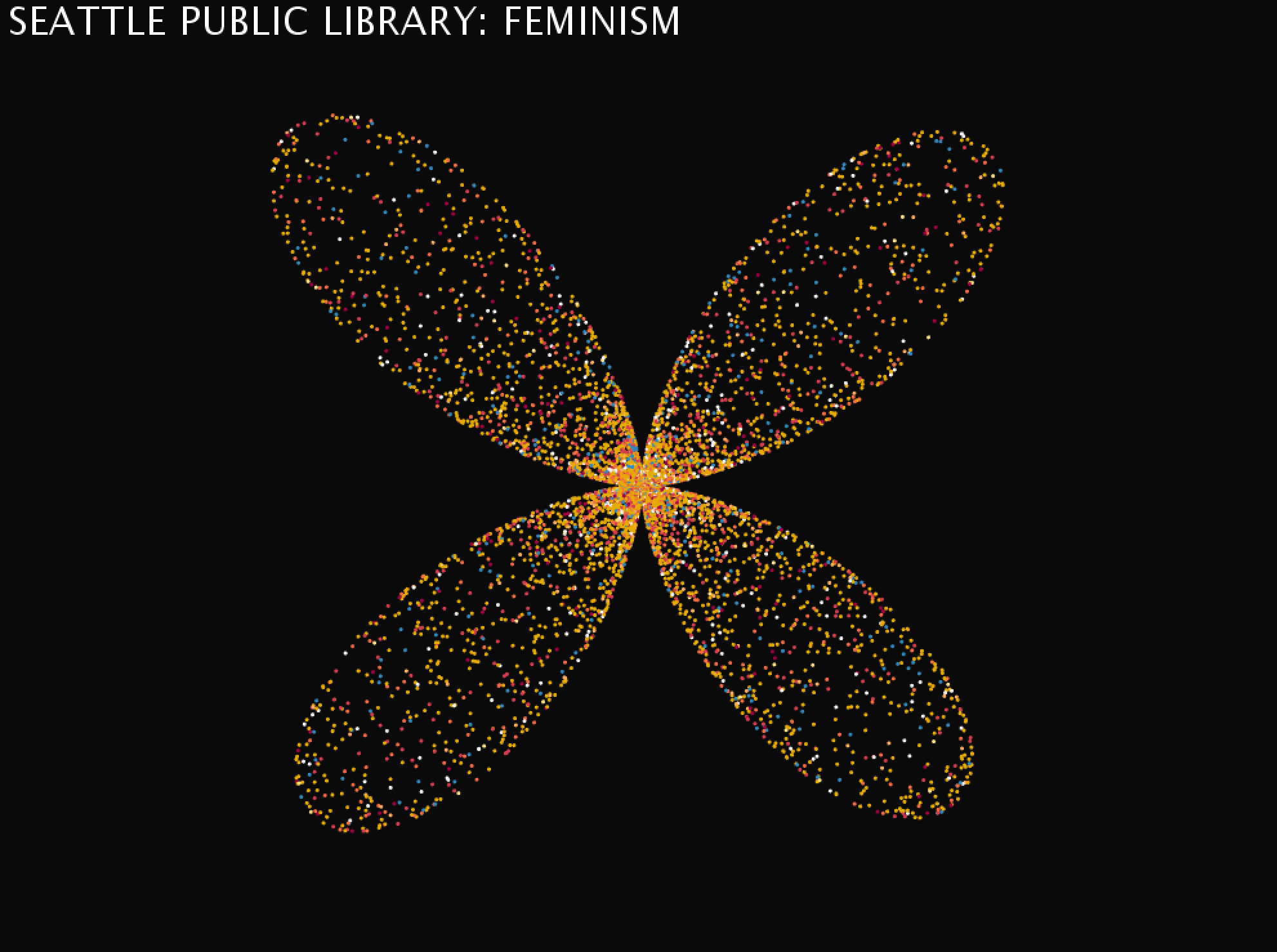3D Visualization || Seattle Public Library
MAT 259, 2018
Annika Tan
Concept
I followed the same theme of using terms like ‘feminism’ and ‘feminist’ from my first projects. I was inspired by the examples from the HE_Mesh library. My goal was to build a spherical harmonics or a shape similar to that. Spherical harmonics are used in mathematics and physical sciences. They are special functions and complete set of orthogonal functions defined on the surface of a sphere.
Query
SELECT title, bibNumber, collcode, deweyClass, TIME(cout) AS times, DATE(cout) AS dates
FROM spl_2016.outraw
WHERE
(title LIKE "%feminism%")
OR (title LIKE "%feminist%")
LIMIT 50000;
FROM spl_2016.outraw
WHERE
(title LIKE "%feminism%")
OR (title LIKE "%feminist%")
LIMIT 50000;
Data attributions
12,388 datasets
elements (string) - categorized under dewey classification
times (time) - item checkout time
dates (date) - item checkout date
counts (integer) - Categorized under collection code
titles (string) - item title
X-axis: time
Y-axis: dates
Z-axis: counts
color: elements
elements (string) - categorized under dewey classification
times (time) - item checkout time
dates (date) - item checkout date
counts (integer) - Categorized under collection code
titles (string) - item title
X-axis: time
Y-axis: dates
Z-axis: counts
color: elements
Process
I was inspired by multiple examples from the HE_Mesh library.
This code is heavily based on Ref_WB_Voronoi_3D and Ref_WB_SphericalHarmonics.
I also referred back to Rodger's 3D tutorial to implement the data and
find a correlation between checked-out items and dewey class.


Final result
My visualization builds 4 stems. It is difficult to detect the relationship between the axes since the points seem sporadically random. We can see the most popular dewey classification category is in Social Studies (golden orange). I also noticed the dewey class without identification (None; white) is mostly concentrated towards the center.
In the future, I would want to focus on the months and years instead of the checkout time. Since a single item or an item with the same title can be checked out multiple times, I would conceptually lose more data points. My original SQL code keeps count for item checkout per year-month. Graphing the dataset on this information would allow viewers to see chronological changes with checkout spikes and dips. This can be due to popular feminist movements and the Women’s March.

In the future, I would want to focus on the months and years instead of the checkout time. Since a single item or an item with the same title can be checked out multiple times, I would conceptually lose more data points. My original SQL code keeps count for item checkout per year-month. Graphing the dataset on this information would allow viewers to see chronological changes with checkout spikes and dips. This can be due to popular feminist movements and the Women’s March.

Code